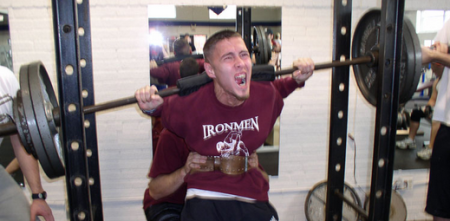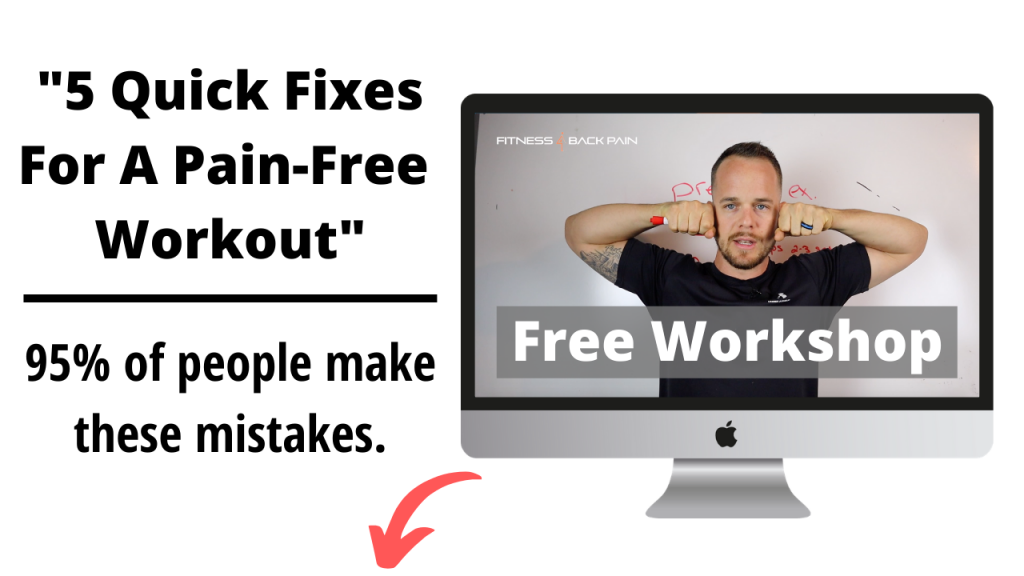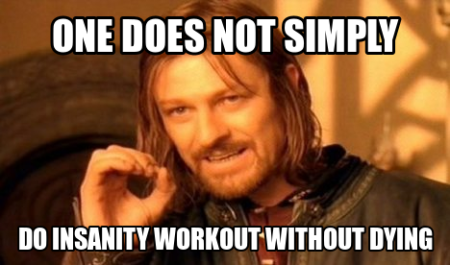
I wish I could have found an article like this 4 years ago. It would have saved me a lot of pain and frustration! Looking back on it now it seems like common sense but sometimes we just need a reminder and our eyes opened to a different outlook on what we are really going through. In this article, I am going to tell you what exercises are good vs bad when it comes to your back pain. Of course this information will vary from person to person but for most, you can follow these tips and apply them to what you’re currently doing now.
I mentioned before that I have a ruptured L5-S1. This means that the fluid sack between the two vertebras has ruptured and is slowly disintegrating. Due to the nature of this injury the biggest thing in the gym that I have to watch for are shearing forces. For example doing deadlifts or squats will have a shearing force on the affected area. What it feels like to me are two bones sitting on top of each other sliding back and forth (depending on the exercise). I’m no expert but I blame this sensation on the lack of structure I have at the L5-S1 vertebra. What this means for me is that I really need to watch myself when doing any kind of loaded exercise such has squats (front or back), dead lifts, some presses and some variations of lunges and bent over pulls. Exercises like squats, dead lifts and anything bent over (bent over rows) are the main movements I have to be super careful with. Secondary exercises like walking lunges, seated presses and the like only require attention to the stability my core is giving me.
Why can I only do some back exercises over others?
Well, when you walk into the gym with back pain you really need to be on your guard. You can’t get caught up with what everyone else is doing. Often times 80% of the people exercising around you already have some kind of back pain. They just assume that since they are in their moving around that means their back pain will get better…I only wish it worked like that. The limitations you need to put on yourself are going to vary from person to person. Someone who is suffering from a herniated disk may be able to get away with exercises that I, having a ruptured disk, wont be able to do. Below is a list of exercises or types of exercises you need to stay away from for now and the reason why. This isn’t a list of all the exercises but only the most common.
Loaded Squats: All spinal loading needs to be stopped until you are able to get your pain under control and even then the weight that you do will be below a moderate amount. If your having disk issues further irritating the area by excessive loading compresses the spine. If anything, you are looking for a DECOMPRESSION affect on your spine to get relief not the opposite. The problem with squatting is the shearing and compression it has on the spine. When you are at the bottom of your squat, your core needs to be fully engaged in order to save your lower back and keep the weight on your heals. Without a healthy spine and a strong core this is out of the question. Its too much load on an area that is already struggling with its health. Don’t make it worse.

Non Supported Presses: Push Press, strict press and/or standing press are all examples of what I am referring to. When you take out all support from a seat or wall your forcing your core to do all the work and if you don’t have a strong core then your body will rely on the joints and surrounding muscles to maintain some form of support. The problem is by the time your core fails and becomes unsupportive, the load gets unevenly distributed throughout the rest of your body including your spine. For someone trying to get over a back injury or chronic pain this is the last thing you want. These exercises are great IF you have worked up to the point where your core is strong and can handle the stability demands your putting on it.
Direct Back Exercises: Two main ones I am referring to the most are all dead lift variations and using the hyperextension machine or chair. I know I have talked about hyperextensions being a good thing (sometimes) for someone with a herniated disk but you want to do these in a controlled, non weight bearing manner. The dead lift is an amazing full body developer but for someone who is dealing with back pain this lift is out of the question until further notice. There are plenty of other things to do that will help develop the lower back that do not involve heavy weights or extreme hyper flexion.
P90X, T25, Insanity and most other at home programs: The problem with these is they are all about getting as much stuff done in a short amount of time. This involves a lot of jumping, dropping and other high impact movements that can really irritate your lower back especially if your core is not where it should be as far as strength. I have heard some people still able use these programs but having to heavily modify the exercises. If this is all you have to stay in shape then do as much as you can but always error on the safe side. The goal is to recover from your low back pain not make it worse or prolong it!
Like I always say, do everything with caution. Everyone is a little different and will respond to exercises differently. Take it at your own pace and If it hurts your back STOP!
What has been your favorite at home program? Let me know in the comments below!
Thanks for reading guys!
William


